Hugo Hammer
Extracting temporal features into a spatial domain using autoencoders for sperm video analysis
Nov 08, 2019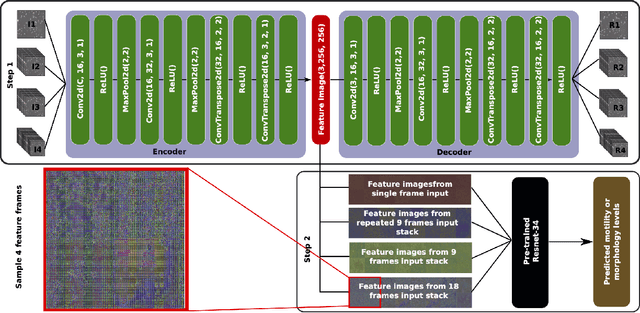
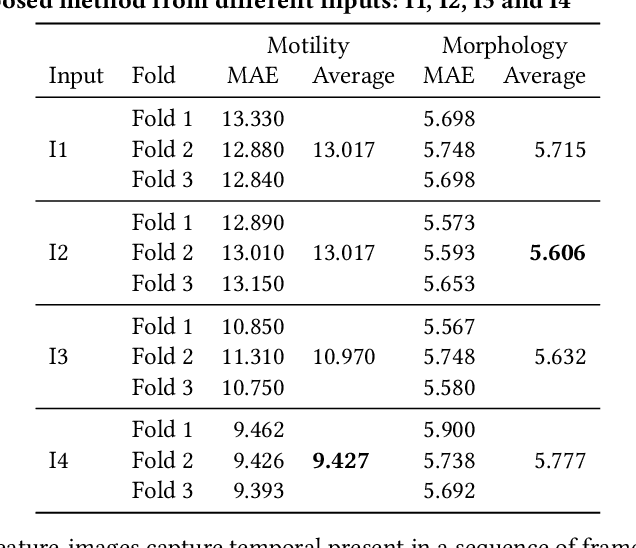
Abstract:In this paper, we present a two-step deep learning method that is used to predict sperm motility and morphology-based on video recordings of human spermatozoa. First, we use an autoencoder to extract temporal features from a given semen video and plot these into image-space, which we call feature-images. Second, these feature-images are used to perform transfer learning to predict the motility and morphology values of human sperm. The presented method shows it's capability to extract temporal information into spatial domain feature-images which can be used with traditional convolutional neural networks. Furthermore, the accuracy of the predicted motility of a given semen sample shows that a deep learning-based model can capture the temporal information of microscopic recordings of human semen.
Stacked dense optical flows and dropout layers to predict sperm motility and morphology
Nov 08, 2019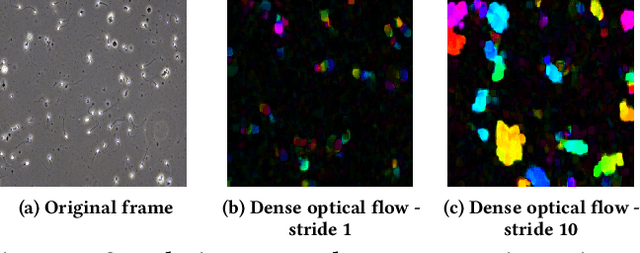
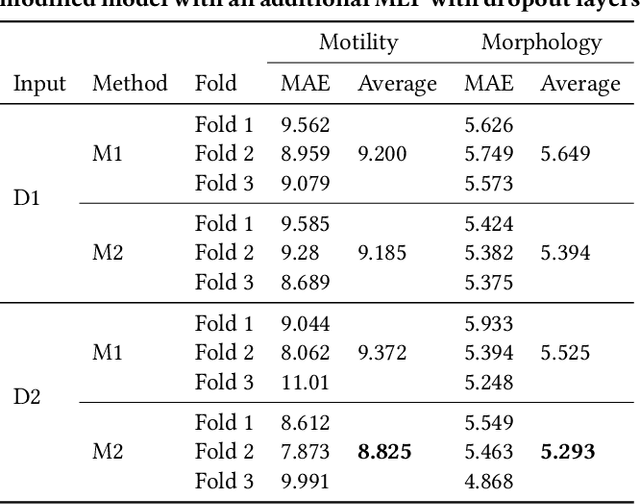
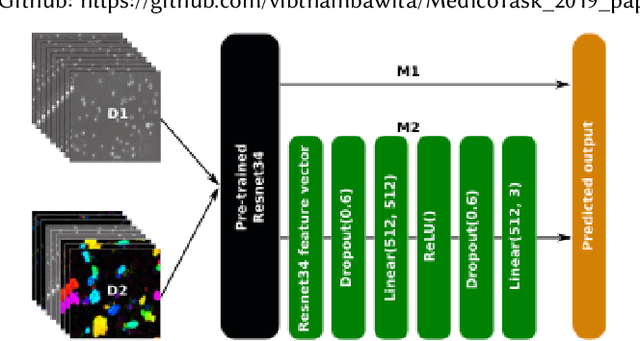
Abstract:In this paper, we analyse two deep learning methods to predict sperm motility and sperm morphology from sperm videos. We use two different inputs: stacked pure frames of videos and dense optical flows of video frames. To solve this regression task of predicting motility and morphology, stacked dense optical flows and extracted original frames from sperm videos were used with the modified state of the art convolution neural networks. For modifications of the selected models, we have introduced an additional multi-layer perceptron to overcome the problem of over-fitting. The method which had an additional multi-layer perceptron with dropout layers, shows the best results when the inputs consist of both dense optical flows and an original frame of videos.
A general representation of dynamical systems for reservoir computing
Jul 03, 2019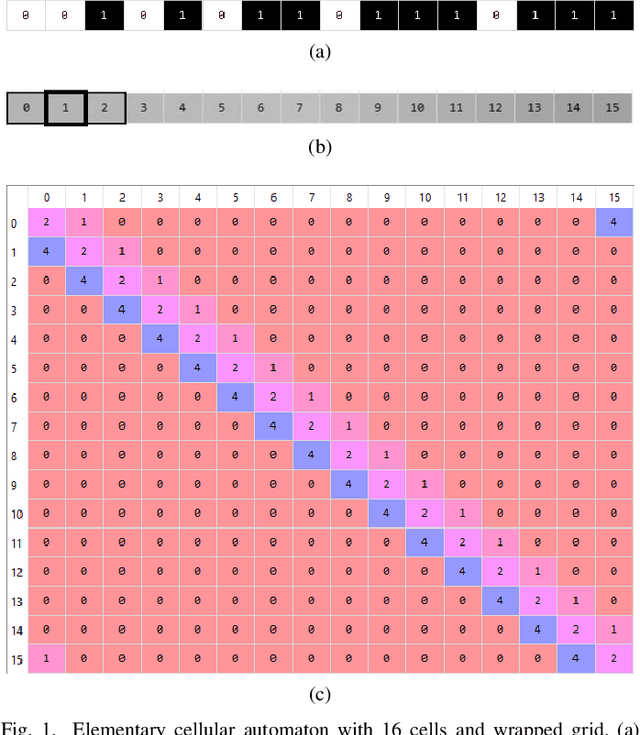
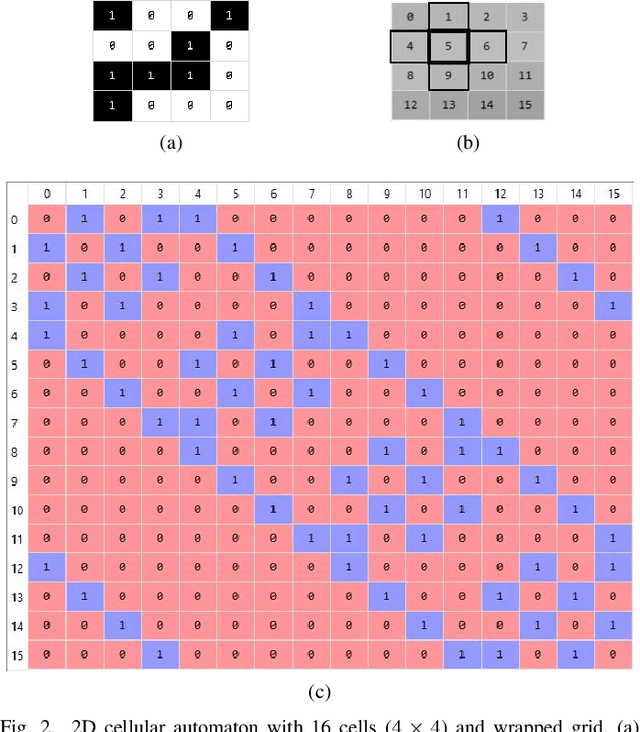
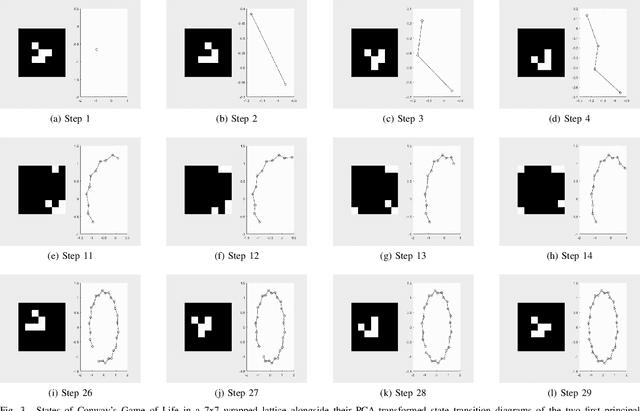

Abstract:Dynamical systems are capable of performing computation in a reservoir computing paradigm. This paper presents a general representation of these systems as an artificial neural network (ANN). Initially, we implement the simplest dynamical system, a cellular automaton. The mathematical fundamentals behind an ANN are maintained, but the weights of the connections and the activation function are adjusted to work as an update rule in the context of cellular automata. The advantages of such implementation are its usage on specialized and optimized deep learning libraries, the capabilities to generalize it to other types of networks and the possibility to evolve cellular automata and other dynamical systems in terms of connectivity, update and learning rules. Our implementation of cellular automata constitutes an initial step towards a general framework for dynamical systems. It aims to evolve such systems to optimize their usage in reservoir computing and to model physical computing substrates.
 Add to Chrome
Add to Chrome Add to Firefox
Add to Firefox Add to Edge
Add to Edge